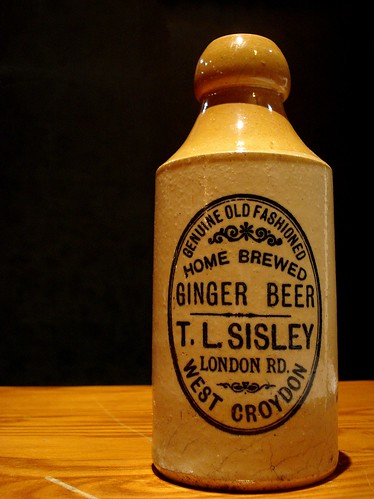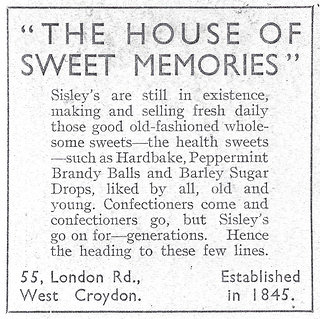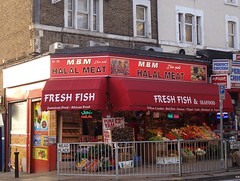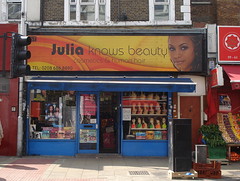Currently vacant, 55 London Road was most recently occupied by a combination of chicken shop, casual Indian cafe, and pizza delivery known variously as Perfect Chicken, Chat Patta, and Mr Pizza. At the time of writing, a sign in the window reading “Waitress Needed” suggests a new business coming soon.
1850s–1870s: Construction of the building, and use as a private residence
Like its neighbours at numbers 51–53 and 57, number 55 was originally built as a private home in the mid-1850s.[1] The first two decades of its life saw several different occupants: Mrs Lake (c.1885), Samuel Rogers Toms (c.1858–1859), Samuel Picken (c.1861–c.1865), Henry Leonard Betteridge (c.1869–c.1871), and Joseph Gill (c.1872–c.1874).[2]
Very little information is available on any of these people, though Samuel Picken is perhaps the best-documented. He was a surgeon working in a partnership known as Bottomley & Picken.[3] At the time of the 1861 census he was 29 years old and unmarried, and he employed one live-in servant; his 28-year-old sister Elizabeth may have lived with him too.[4]
mid-1870s: James Compton, boot maker
Of the seven properties (31–57) built on either side of Mead Place in the mid-1850s, number 55 was the one that remained residential for the longest period. All except this one were in commercial use by the start of 1874, either as retail shops or as service providers.[5] This two-decade streak ended by 1876 with the arrival of James Compton, bootmaker, but by 1878 James had left and the property fell vacant.[6]
c.1880: John S Chambers, confectioner
Next to arrive was a confectionery shop run by Yorkshire-born John S Chambers. This was in place by 1880 and gone again by 1882, but despite its short tenure it was to set the tone for the next eight decades.[7]

1880s–1960s: Sisley’s sweet shop

Charles A Sisley arrived on London Road around 1883, and brought number 55 back into business as a confectioners.[8] By 1886 the shop had passed to Thomas Lawrence Sisley,[9] and by 1911 it had passed to Thomas’s son, also named Thomas.[10] It continued to trade under the name of Sisley’s until the early 1960s.
Mick Cantwell, who was born on Sutherland Road in 1947 and lived in Croydon until the 1970s, remembers Sisley’s as “A large double fronted shop, inside there was a ‘U’ shaped counter arrangement, with shelves behind and on the top shelf there were large coloured glass, bottles or similar, like you use to get in chemists.”[11]
The Croydon Oral History Society publication Talking of Croydon: Shops and Shopping 1920–1992 includes memories from another Croydon resident, Gwen: “I remember Sicily's [sic] which was a family sweet shop opposite Croydon General Hospital. And one of its great things was all the sweets were made on the premises. I loved their brandy balls. I'm sure there was no brandy in them but they were roughly pepperminty sweets – very nice. They made beautiful toffees and it smelt marvellous when you went by – pear drops which smelt terrible and acid drops, bullseyes, black and white striped, and peppermints. None, or very few, were wrapped in paper but it didn't seem to do us any harm.”[12]
1960s–1980s: Deedar India Restaurant
Sisley’s closed its doors for the last time in the early 1960s, and by 1964 it had been replaced by Deedar India [sic] Restaurant.[13] This had an unusual frontage, with a row of several tall, narrow, recessed oval windows. The owner, Mr Uddin, had some trouble getting Croydon Council to agree to his “unconventional shopfront”, with an officer from the planning department noting that they were “not at all happy with the shopfront treatment” and that “no doubt we will be negotiating alterations to the proposed shopfront”. One aspect that was flatly refused was a proposal to install a large protruding rectangular block above the doorway, which was considered “seriously detrimental to the visual amenities of the general street scene by reason of its size and siting”.[14]
John Byford, who was in his teens when Deedar opened, recalls:[15]
The Deedar was one of the favourite Indian restaurants of boys from the John Ruskin Grammar School after drinking in public houses in Croydon. (It was the first Indian restaurant I'd been to — though curries were not unfamiliar to me as my father had learnt to make curries while serving in the Royal Navy drafts in India and Sri Lanka before and during World War 2.) The service was excellent, the food above average for Indian restaurants in the mid 1960s and mostly I remember vegetables such as okra and aubergines which were a novelty at the time.
1980s: Ali Nan Kebab
Deedar remained on London Road until the early 1980s, but by 1983 it had given way to Ali Nan Kebab,[16] an altogether more utilitarian-looking establishment with a fully glazed frontage. This offered curries including mutton, “chicken off the bone”, daal, and okra, as well as masala dosas and sweets including gulab jamun, laddu, and barfi. It was open until 2am (4am on Fridays and Saturdays), and offered both takeaway and eating in at small tables surrounded by orange plastic chairs.[17] It lasted only a few years, however, and was gone by mid-1989.[18]
1990s–2013: The era of fried chicken
By July 1989, 55 London Road’s era of fried chicken had begun in earnest. Tennessee Fried Chicken (c.1989–c.1990) was the pioneer, swiftly followed by Southern Fried Chicken (c.1992–c.1993), Morleys Fried Chicken (c.1995), Syd’s (c.1996), Joy’s Chicken (c.1997–c.2000), Tasty Chicken Hut (c.2001–c.2002), and finally Perfect Chicken.[19]
Perfect Chicken was in place by May 2004, and by July 2008 the frontage included signage for Mr Pizza and Chat Patta.[20] It closed down some time between May and July 2014, just a couple of months after Jan Kattein Architects produced a new frontage design to be implemented as part of the Connected Croydon High Street improvements (PDF).
Thanks to: Celia Bailey; John Byford; Mick Cantwell; Brian Gittings; bob walker; the Planning Technical Support Team at Croydon Council; all at the Croydon Local Studies Library; and my beta-readers Helen and Kat. Census data and London phone books consulted via Ancestry.co.uk.
Footnotes and references
- See my articles on numbers 31 and 37 for evidence on building dates and original purposes.
- Mrs Lake is listed in Gray and Warren’s 1855 directory, with the explicit notation “private resident”. Samuel Rogers Toms is listed in the October 1858 Poor Rate Book (as Saml R Toms) and Gray and Warren’s 1859 directory (again with the explicit notation “private resident”). Samuel Picken is listed in the 1861 census, Gray and Warren’s 1861–62 directory (as S Picken, surgeon, with the additional note of “Bottomley & Picken”, presumably the name of his practice); the November 1862 and June 1864 Poor Rate Books (as “Picken”); Simpson’s 1864 directory (with the notation “private resident”); the December 1864, July 1865, and November 1865 Poor Rate Books (as [indecipherable] Picken); and Warren’s 1865–66 directory. His name also appears in the June 1866 and October 1866 Poor Rate Books, but crossed out, perhaps indicating an early form of copy-paste error. Henry Leonard Betteridge is listed in Warren’s 1869 directory and the 1871 census. Joseph Gill is listed in Wilkins’ 1872–3 directory (as J Gill), the December 1873 Poor Rate Book, and Ward’s 1874 directory.
- As noted in the previous footnote, Gray and Warren’s 1861–62 street directory includes the name of “Bottomley & Picken”. According to a notice on page 3681 of the 22 July 1862 London Gazette, the partnership between George Bottomley and “Samuel Picken the younger”, who had been “carrying on business as Surgeons, Apothecaries, and Accoucheurs, at Croydon, in the county of Surrey” was “dissolved by mutual consent” on 10 July 1862, with the business being “in future carried on by the said George Bottomley”.
- Elizabeth Picken is listed in her brother’s household on the 1861 census, but as a census is just a snapshot in time she may have merely been visiting overnight.
- Ward’s 1874 directory lists a watch and clock maker at number 31, a draper at number 33, a butcher at number 35, a wine and spirit merchant at number 37, a school for young ladies at number 51–53, and a doctor of medicine at number 57. It could perhaps be argued that the doctor at number 57 may not have practiced at home, but Ward’s 1874 directory lists him at this address under “Surgeons”, and doesn’t give any other address for him.
- Ward’s directories list Joseph Gill (no profession given and hence almost certainly a private resident) in 1874 and James Compton, boot maker, in 1876. Wilkins’ 1876–7 directory lists J Compton, boot maker. Ward’s 1878 and Atwood’s 1878 directories list the property as unoccupied.
- Ward’s 1880 directory lists G S Chambers, confectioner, but I think the “G” is a typo, as the 1881 census has John S Chambers, confectioner, married, age 46, born in Irton in Yorkshire. Ward’s 1882 and Purnell’s 1882 list the property as unoccupied.
- Ward’s directories list C A Sisley, confectioner, in 1884 and Charles A Sisley, confectioner, in 1885.
- I’m not sure what relationship there was between Charles A Sisley and Thomas Lawrence Sisley. According to census data, Thomas’s father was also called Thomas, and none of his brothers seem to have been called Charles. (The 1891 census states that Thomas Lawrence Sisley was born in Hackney and was aged 42 at the census date, which makes it fairly easy to trace him back through earlier censuses.)
- The 1901 census shows our original Thomas L Sisley as head of the household along with his wife Ann E Sisley and several children including 20-year-old Thomas L Sisley. The 1911 census lists 30-year-old Thomas Sisley as head of the household along with his wife, daughter, sister, sister-in-law, niece, nephew, and mother (the latter of whom is now known as “Annie”). Interestingly, his mother is shown as married rather than widowed, and indeed the original Thomas L Sisley was still alive at this point. However, he appears in this census as head of a different household on Kingsland High Street in North London, still working as a confectioner, with the assistance of two of his nieces.
- Via email, 20 June 2014. Mick’s birthplace of Sutherland Road is between London Road and Mitcham Road. I suspect that by “double fronted”, Mick means that the door was in the centre.
- Talking of Croydon: Shops and Shopping 1920–1992 is available under shelfmark S70 (658.8) JOH at the Croydon Local Studies Library. The Francis Frith website has another short memory of Sisley’s written by Yvonne Kolessides.
- Ward’s directories list Thomas Lawrence Sisley, confectioner, from 1886 to 1932 inclusive, and T L Sisley, confectioner, in 1934, 1937, and 1939 (at which point Ward’s ceased publication). T L Sisley also appears in the April 1962 Croydon phone book, but not the 1963 edition. A planning application for a new frontage for Deedar India [sic] Restaurant was submitted on 27 August 1963 and granted on 14 October 1963 (ref A3314), viewed on microfiche at Croydon Council offices). Deedar is listed in Croydon phone books from March 1964 onwards.
- Information on the proposed frontage for Deedar, the name of the owner, and the first three quoted phrases taken from planning application ref 71-20-1663. Details of rectangular doorway block and final quoted phrase taken from planning application ref A6334. A photo taken by Brian Gittings in c.1981 shows that the oval windows at least did make it through the planning process (far left of image).
- Via email, 3 January 2015.
- Deedar India [sic] Restaurant is listed in Croydon phone books from March 1964 to 1981 inclusive. Ali Nan Kebab “rest[aurant] t/a [takeaway] conf[ectionery]” is listed in the March 1983 Goad plan. There was also a restaurant called Ali Nan Kebab at 241 London Road in the late 1970s, and one at 25 Whitehorse Road around 1982. The menu mentioned in the next footnote claims that the business was established in 1972, suggesting that these may have all been the same business, just moving around.
- Details of Ali Nan Kebab’s appearance taken from Brian Gittings’ photo, reproduced here. Menu items and opening hours taken from a menu in the firms filing cabinet at Croydon Local Studies and Archives Service, which includes the address as 55 London Road and the date of issue as September 1988. This menu also includes the intriguingly-named “Piea” under curries, costing £2.50 (the same as a meat vindaloo) — I haven’t been able to work out what this is.
- Ali Nan Kebab is shown on Goad plans from March 1983, March 1984, and March 1985, but on the last of these there’s an additional note “closing down (Stuart Edwards)” (Stuart Edwards being an estate agents). The April 1986 Goad plan shows the property as vacant, but the April 1987 edition again has Ali Nan Kebab “t/a fds” [takeaway food], and the menu mentioned in the previous footnote confirms that it was open in 1988. A planning application submitted on 8 June 1989 (ref 89-1781-A) for frontage and projecting signs showing “Tennessee Fried Chicken” includes the note that “A site inspection on 14.7.89 confirmed that both fascia and projecting sign had already been installed. Also it confirmed that they were both acceptable in planning terms and gave no cause for objection. Grant consent.” Consent was granted on 20 July 1989 (i.e. six days after the site inspection).
- Tennessee Fried Chicken appears in the March 1990 Goad plan and the 1990 Croydon phone book (as “Tennesse Fried Chicken”) — see previous footnote for evidence on 1989 date. The June 1991 Goad plan shows the premises as vacant. Southern Fried Chicken appears in the February 1992 Croydon phone book, the June 1992 Goad plan, the April 1993 Goad plan, and the July 1993 Croydon phone book; it’s also mentioned in records relating to a planning application for number 74 (ref 92/2622/P), specifically in a letter from the applicatn’s architects listing nearby food-related places. The April 1994 Goad plan shows the premises as vacant. Morleys Fried Chicken appears in the January 1995 Croydon phone book and the June 1995 Goad plan. “Syd's take away food” appears in the May 1996 Goad plan. Joy’s Chicken appears (under various names including Joys Chicken and Joy’s Fried Chicken) in the May 1997, June 1998, September 1999, and May 2000 Goad plans, as well as the January 1998 Croydon phone book (which also lists a branch at 914 London Road). Tasty Chicken Hut appears in the June 2001 and May 2002 Goad plans. Perfect Chicken appears in Goad plans from May 2004 onwards, as well as the 2007–8 and 2008–9 Croydon phone books (Chat Patta and Mr Pizza are absent from all of these sources).
- Google Street View from July 2008 shows the frontage much as it was just before it closed down.
![A terraced shop with a large black-on-yellow sign above reading “Ali Nan Kebab / Curry Sweets Masala Dhosai / Restaurant & Take Away Serv[...]. Orange plastic chairs are visible through the fully glazed shopfront.”](/history/images/0055/ali-nan-kebab-brian-gittings-355px.jpg)

